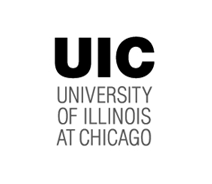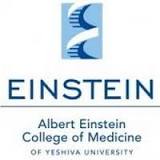Sildenafil Therapy for Pulmonary Hypertension and Sickle Cell Disease
| Status: | Terminated |
|---|---|
| Conditions: | High Blood Pressure (Hypertension), High Blood Pressure (Hypertension), Anemia |
| Therapuetic Areas: | Cardiology / Vascular Diseases, Hematology |
| Healthy: | No |
| Age Range: | 12 - 70 |
| Updated: | 4/21/2016 |
| Start Date: | June 2007 |
| End Date: | October 2009 |
Treatment of Pulmonary Hypertension and Sickle Cell Disease With Sildenafil Therapy
This study will examine whether the drug sildenafil can lower blood pressure in the
pulmonary artery (the blood vessel that leads from the heart to the lungs) in patients with
sickle cell disease and pulmonary hypertension (high blood pressure in the lungs). It will
see if this treatment can reduce disease complications, such as shortness of breath, pain
crisis, pneumonia, and increase survival.
Patients 12 years of age and older with sickle cell disease and pulmonary hypertension may
be eligible for this study. Participants are randomly assigned to receive sildenafil or
placebo (sugar pill) for 16 weeks. Before starting treatment, patients have baseline
studies, including a pregnancy test for females of childbearing age; a chest x-ray;
pulmonary function tests to measure how much air the patient can breathe in and out; an
echocardiogram (heart ultrasound); a 6-minute walk test to measure exercise capacity; a
quality-of-life assessment and a pain inventory. Patients with moderate to severe pulmonary
hypertension undergo heart catheterization to evaluate the severity of hypertension before
beginning sildenafil therapy.
During treatment, patients are monitored with the following:
- Blood tests: weeks 6, 10 and 16.
- Echocardiogram: weeks 6 and 16.
- 6-minute walk test: weeks 6, 10 and 16.
- Measurements of weight, blood pressure and heart rate: weeks 6, 10 and 16.
- Pregnancy test for women of childbearing age: weeks 6, 10 and 16.
- Pain questionnaire once a day for a week: weeks 6 and 1.0
- Quality-of-life questionnaire: week 16.
- Heart catheterization: week 16 for patients with moderate to severe hypertension.
At the end of the 16-week period, patients may opt to continue to receive sildenafil and
monitoring in an open-label phase of the study for up to 1 year.
pulmonary artery (the blood vessel that leads from the heart to the lungs) in patients with
sickle cell disease and pulmonary hypertension (high blood pressure in the lungs). It will
see if this treatment can reduce disease complications, such as shortness of breath, pain
crisis, pneumonia, and increase survival.
Patients 12 years of age and older with sickle cell disease and pulmonary hypertension may
be eligible for this study. Participants are randomly assigned to receive sildenafil or
placebo (sugar pill) for 16 weeks. Before starting treatment, patients have baseline
studies, including a pregnancy test for females of childbearing age; a chest x-ray;
pulmonary function tests to measure how much air the patient can breathe in and out; an
echocardiogram (heart ultrasound); a 6-minute walk test to measure exercise capacity; a
quality-of-life assessment and a pain inventory. Patients with moderate to severe pulmonary
hypertension undergo heart catheterization to evaluate the severity of hypertension before
beginning sildenafil therapy.
During treatment, patients are monitored with the following:
- Blood tests: weeks 6, 10 and 16.
- Echocardiogram: weeks 6 and 16.
- 6-minute walk test: weeks 6, 10 and 16.
- Measurements of weight, blood pressure and heart rate: weeks 6, 10 and 16.
- Pregnancy test for women of childbearing age: weeks 6, 10 and 16.
- Pain questionnaire once a day for a week: weeks 6 and 1.0
- Quality-of-life questionnaire: week 16.
- Heart catheterization: week 16 for patients with moderate to severe hypertension.
At the end of the 16-week period, patients may opt to continue to receive sildenafil and
monitoring in an open-label phase of the study for up to 1 year.
Sickle cell disease (SCD) is an autosomal recessive disorder and the most common genetic
disease affecting African-Americans. Approximately 0.15 percent of African-Americans are
homozygous for sickle cell disease, and 8 percent have sickle cell trait. Acute pain crisis,
acute chest syndrome (ACS), and pulmonary hypertension are common complications of sickle
cell anemia. Pulmonary hypertension (PH) has now been identified as a marker of mortality in
adults with sickle cell disease. Sildenafil has been proven beneficial in pulmonary
hypertension (PH) and recent phase I/II studies from the intramural National Institutes of
Health (NIH) suggest it is well tolerated and efficacious in the SCD population.
Furthermore, a number of recent studies have suggested that nitric oxide (NO) based
therapies may have a favorable impact on sickle red cells at the molecular level and could
improve the abnormal microvascular perfusion that is characteristic of sickle cell anemia.
The project has 3 distinct components:
1. Screening Phase. Approximately 1000 subjects with sickle cell disease will be screened.
Assessments will include historical and laboratory data, Doppler echocardiogram,
6-minute walk test, plasma/serum, and DNA for banking.
2. Main Interventional Trial. The randomized, double-blind, placebo controlled phase is
designed to determine the effects of 16 weeks of Sildenafil therapy on exercise
endurance, cardiopulmonary hemodynamic parameters and symptoms in this patient
population. The open-label follow-up phase is designed to provide up to an additional
year of Sildenafil therapy to subjects who completed the randomized, double-blind
phase.
3. Observational Follow-up Study. Screened patients who do not qualify for participation
in the main interventional trial may be contacted every 6-12 months for up to 3 years
to assess major disease-related complications, including mortality.
disease affecting African-Americans. Approximately 0.15 percent of African-Americans are
homozygous for sickle cell disease, and 8 percent have sickle cell trait. Acute pain crisis,
acute chest syndrome (ACS), and pulmonary hypertension are common complications of sickle
cell anemia. Pulmonary hypertension (PH) has now been identified as a marker of mortality in
adults with sickle cell disease. Sildenafil has been proven beneficial in pulmonary
hypertension (PH) and recent phase I/II studies from the intramural National Institutes of
Health (NIH) suggest it is well tolerated and efficacious in the SCD population.
Furthermore, a number of recent studies have suggested that nitric oxide (NO) based
therapies may have a favorable impact on sickle red cells at the molecular level and could
improve the abnormal microvascular perfusion that is characteristic of sickle cell anemia.
The project has 3 distinct components:
1. Screening Phase. Approximately 1000 subjects with sickle cell disease will be screened.
Assessments will include historical and laboratory data, Doppler echocardiogram,
6-minute walk test, plasma/serum, and DNA for banking.
2. Main Interventional Trial. The randomized, double-blind, placebo controlled phase is
designed to determine the effects of 16 weeks of Sildenafil therapy on exercise
endurance, cardiopulmonary hemodynamic parameters and symptoms in this patient
population. The open-label follow-up phase is designed to provide up to an additional
year of Sildenafil therapy to subjects who completed the randomized, double-blind
phase.
3. Observational Follow-up Study. Screened patients who do not qualify for participation
in the main interventional trial may be contacted every 6-12 months for up to 3 years
to assess major disease-related complications, including mortality.
• Eligibility based on the following inclusion and exclusion criteria.
INCLUSION CRITERIA:
Screening Phase:
- Males or females, greater than or equal to 12 years of age and less than or equal to
70 years of age.
- Diagnosis of sickle cell disease (including, but not limited to SS, SC, SD, or S-beta
zero thalassemia).
- Provision of informed consent and, where applicable, assent.
Observational Follow-up Study:
- Satisfaction of screening criteria.
- In the opinion of the investigator, ability to maintain follow-up contact.
- Failure to satisfy the eligibility requirements of the Main Interventional Trial
(MIT) OR discontinuation/completion of the MIT/Open-label Follow-up Phase.
- Provision of informed consent and, where applicable, assent.
Main Interventional Trial:
- Males or females, 12 years of age or older and less than or equal to 70 years of age.
- Female subjects, on a reliable method of birth control or not physically able to bear
children.
- Electrophoretic documentation of sickle cell disease (including, but not limited to
SS, SC, SD, or S-beta zero thalassemia).
- At least mild pulmonary hypertension with TRV greater than or equal to 2.7 m/sec by
echocardiogram.
- Six-minute walk distance of 150-500 m.
- In the opinion of the investigator, able to complete the protocol scheduled
assessments during the 16-week, double-blind phase.
- Provision of informed consent and, where applicable, assent.
- Subjects with systemic hypertension must be on a stable antihypertensive regimen for
greater than or equal to 90 days and a stable dose for greater than or equal to 30
days.
EXCLUSION CRITERIA:
Current pregnancy or lactation.
Any one of the following medical conditions:
- Stroke within the last six weeks.
- Diagnosis of pulmonary embolism within the last three months.
- History of retinal detachment or retinal hemorrhage in the last 6 months.
- Non-arteritic anterior ischemic optic neuropathy (NAION) in one or both eyes.
- History of sustained priapism requiring medical or surgical treatment, unless
currently impotent or on transfusion program within the last two years.
- Any unstable (chronic or acute) condition that in the opinion of the investigator
will prevent completion of the study.
Subjects taking nitrate-based vasodilators (including, but not limited to nicorandil
[available in the UK only]), prostacyclin (inhaled, subcutaneous or intravenous) or
endothelin antagonists. Subjects taking calcium channel blockers will be allowed to
participate if they are on a stable dose for greater than or equal to 3 months.
Left ventricular ejection fraction (LVEF) less than 40 percent or clinically significant
ischemic, valvular or constrictive heart disease: LVEF less than 40 percent or SF less
than 22 percent.
Subjects in other research studies with investigational drugs (with the exception of
hydroxyurea) unless the other trial has been approved by the walk-PHaSST Executive
Committee for co-participation.
Acute or chronic impairment (other than dyspnea), limiting the ability to comply with
study requirements (in particular with 6MWT), e.g., angina pectoris, intermittent
claudication, symptomatic hip osteonecrosis.
Tonsillectomies for sleep apnea within 3 months prior to randomization. Active therapy for
pulmonary hypertension, including prostacyclin analog, endothelin-1 antagonist, or PDE-5
inhibitor.
Protease inhibitor therapy for HIV treatment Subjects taking potent CYP3A4 inhibitor
therapy (e.g., itraconazole, ritonavir, ketoconazole) Subjects who are anticoagulated and
have proliferative retinopathy (unless they have had ophthalmologist recommended
intervention (e.g., phototherapy) or have been cleared by the ophthalmologist to
participate in the study.
Subjects with systolic blood pressure greater than or equal to 140 mmHg OR diastolic blood
pressure greater than or equal to 90 mmHg.
We found this trial at
9
sites
University of Illinois at Chicago A major research university in the heart of one of...
Click here to add this to my saved trials
Johns Hopkins University The Johns Hopkins University opened in 1876, with the inauguration of its...
Click here to add this to my saved trials
9000 Rockville Pike
Bethesda, Maryland 20892
Bethesda, Maryland 20892
Click here to add this to my saved trials
Albert Einstein College of Medicine The Albert Einstein College of Medicine of Yeshiva University is...
Click here to add this to my saved trials
Click here to add this to my saved trials
Click here to add this to my saved trials
Click here to add this to my saved trials
Click here to add this to my saved trials
Click here to add this to my saved trials


